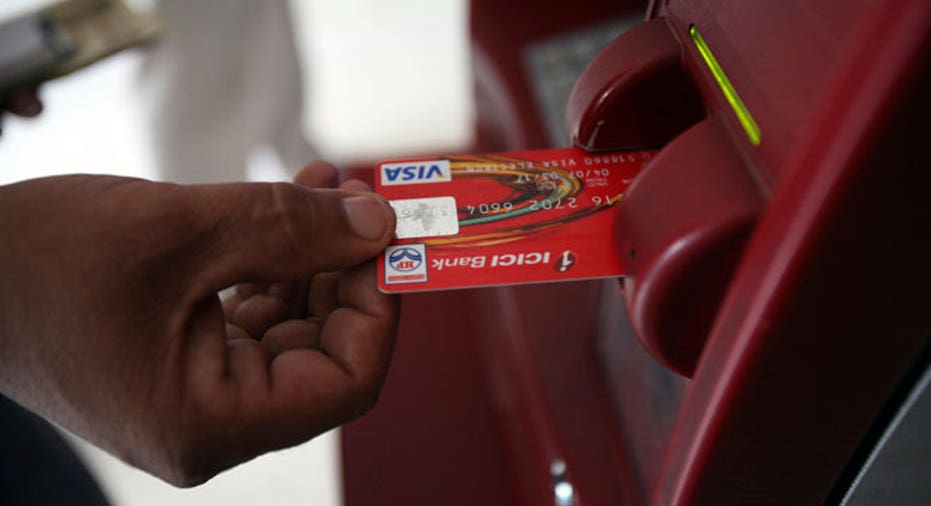Armed With Plastic: Credit Card Rules for College Students

Extra-long sheets—check. Shower caddy—check. Meal plan—check. Credit card…..
As incoming freshmen and their families prepare for their college journey, many parents will be handing their kid a credit card for the first time. Some cards may come with strict use rules like “only for emergencies” while others are more relaxed with “just don’t crazy, honey.” No matter the severity of the spending guidelines, parents need to institute clear rules and expectations so students establish good fiscal and spending habits.
A 2009 study from Sallie Mae showed that the average freshman owed $2,038 on credit cards, while the average senior owed $4,138.
Under the CARD Act of 2009 , any one under the age of 21 cannot apply for credit cards unless they have a proven source of money (like a part-time job) or a co-signer on the account (presumably a parent).
Parents who co-sign on a credit card for their student need to understand that they are equally liable for payment of the debt, and that the account activity will be reported on both their credit report and the students, says Gail Cunningham, vice president of membership and public relations for the National Foundation for Credit Counseling.
As a result, parents should determine if their child is mature enough to handle their own card or simply add them on to an existing account.
“This way the parent can review the account activity at any time, and has the authority to remove the student from the account,” Cunningham says.
To help them responsibly build credit and avoid credit mistakes, here are expert guidelines that parents should give their students before handing over the plastic.
Set boundaries. Parents should establish spending rules before heading to campus to ensure that both parties are on the same page.
Especially for freshmen who will have most of their basic need costs covered by room and board and meal plans, it’s important to lay down the law for what students can charge, says Laura Creamer, financial education specialist for CredAbility.
“Parents are going to have to explain different scenarios which are appropriate and not appropriate and that they’re going to look at the statement every month,” she says. “If [students] find themselves in a position where their car broke down somewhere, then that would be something where they could use their credit card.”
To avoid any gray areas, Cunningham suggests that families jointly develop the conditions, write them out as a contract, and have both parties sign.
“Be sure that the student knows the credit privileges can be revoked if abused and make sure they know that you’re not going to bail them out, but they will have to suffer the consequences of their actions,” she says.
Go over the fine print. The tiny writing at the bottom of the credit card statement contains significant information that parents should thoroughly explain to their student, says Beverly Harzog, credit card expert and consumer advocate.
“It’s very important to show them the interest rate, the APR and go over what the grace period means--every issuer has a different grace period that usually ranges from 21 to 25 days and there are some cards out there that don’t have any,” she says.
If students have a card with a rewards program, Harzog suggests parents explain the perks and stipulations.
“Show them how you find out what they are online and how to check their account,” she says. “For a 5% cash bonus, they need to sign up every quarter and they need to understand how that works if they want rewards.”
Beyond the added extras, learning how to read the monthly statement, identifying the due date and amount due is critical, says Cunningham.
“Since paying the bill on time weighs in at 35% of the credit score, one lost or forgotten statement can be disastrous.”
Discuss the consequences. Harzog recommends parents detail how crucial a good credit score is and how overspending can cause significant damage now and later in life.
“Some employers are looking at a credit score—if you put it into terms they understand like if they have a bad credit score when they get out of college, this is going to affect how much they’re going to pay for insurance, car insurance, health insurance,” she says.
Creamer suggests parents point out how it can affect their student’s immediate future as well, especially if they want to move off campus into an apartment.
“The apartment complex is going to run their credit and if they don’t have good credit and have previous things on there, that might prevent them from moving out on their own.”
If students make a mistake or their spending gets out of hand, Creamer suggests immediately confronting the problem and creating a repair and payback plan.
“Ask them questions like, ‘why do you think it was appropriate to do this?’ and ‘how long do you think this would take to pay off’?” she says. “Doing the math with them and explaining why in the future it should not be used for that particular thing is important--students need to know why.”